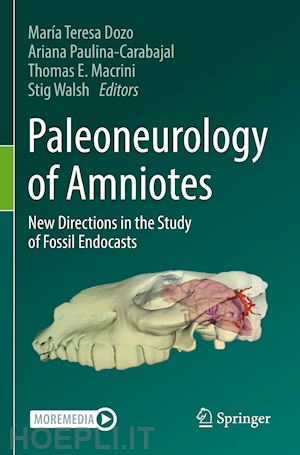
Questo prodotto usufruisce delle SPEDIZIONI GRATIS
selezionando l'opzione Corriere Veloce in fase di ordine.
Pagabile anche con Carta della cultura giovani e del merito, 18App Bonus Cultura e Carta del Docente
This book presents a detailed examination of the current state of knowledge in the field of paleoneurology in the main amniote groups (reptiles, birds and mammals), and advances resulting from new non-invasive technologies. The study of fossil endocasts is an area of considerable current interest, and has long been central to our understanding of the evolution of the brain, development of senses and behavioral adaptations in diverse vertebrate groups and across vertebrates as a whole. Recent advances in non-invasive imaging have significantly increased the number of fossil taxa for which brain morphology is known, and it may now be possible to quantitatively analyze the relative size of brain regions.
Providing a general overview of current perspectives and problems in evolutionary neuroanatomy, this book is intended for a wide range of readers, including undergraduate and graduate students, teachers, and anyone with a special interest in paleoneurology. It isalso useful as supplementary reading for courses in digital anatomy, vertebrate comparative anatomy, computed morphometrics, paleontology, neurology and radiology as well as evolution programs











Il sito utilizza cookie ed altri strumenti di tracciamento che raccolgono informazioni dal dispositivo dell’utente. Oltre ai cookie tecnici ed analitici aggregati, strettamente necessari per il funzionamento di questo sito web, previo consenso dell’utente possono essere installati cookie di profilazione e marketing e cookie dei social media. Cliccando su “Accetto tutti i cookie” saranno attivate tutte le categorie di cookie. Per accettare solo deterninate categorie di cookie, cliccare invece su “Impostazioni cookie”. Chiudendo il banner o continuando a navigare saranno installati solo cookie tecnici. Per maggiori dettagli, consultare la Cookie Policy.